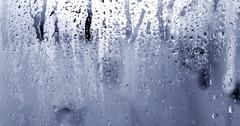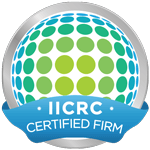
Water damage in homes poses a dual threat – the immediate impact of structural damage and the subtler, yet equally significant, challenge of indoor air quality. Humidity levels rise, creating an environment conducive to mold growth, and if not addressed promptly, these issues can lead to long-term consequences for both your home and your health. In this blog post, we'll explore the relationship between water damage, indoor air quality, and effective strategies for addressing humidity and mold concerns.
The Interplay of Water Damage and Indoor Air Quality
Humidity Spike
When water infiltrates a home, whether through leaks, floods, or other incidents, it raises indoor humidity levels. Excess humidity can create a breeding ground for mold, dust mites, and other allergens, impacting the overall air quality in your living space.
Mold Proliferation
Mold spores are naturally present in the air, but they require moisture to grow. Water damage provides the ideal conditions for mold proliferation. Once mold takes hold, it releases spores into the air, contributing to poor indoor air quality and potential health hazards.
Airborne Contaminants
Water damage can introduce various contaminants into the air, including particulate matter, allergens, and potentially harmful microorganisms. These airborne pollutants can trigger respiratory issues, allergies, and other health concerns among occupants.
Recognizing Signs of Water Damage
Visible Signs
Obvious signs of water damage include discoloration, warping, or bulging of walls, ceilings, and floors. Stains, peeling paint, and visible mold growth are also indicators of water-related issues.
Musty Odor
A persistent musty or damp odor is a common sign of hidden water damage. If you notice a lingering smell, it's crucial to investigate and address the source promptly.
Increased Allergy Symptoms
An increase in allergy symptoms, such as sneezing, coughing, and watery eyes, may be linked to poor indoor air quality resulting from water damage and mold growth.
Impact on Indoor Air Quality
Respiratory Issues
Exposure to mold and other contaminants in the air can exacerbate respiratory issues, particularly for individuals with asthma, allergies, or compromised immune systems.
Allergic Reactions
Mold spores, dust mites, and other allergens released into the air can trigger allergic reactions, including congestion, itching, and skin rashes.
Long-Term Health Effects
Prolonged exposure to poor indoor air quality may contribute to long-term health effects, such as chronic respiratory conditions and other respiratory illnesses.
Strategies for Addressing Humidity and Mold Concerns
Prompt Water Extraction
Address the source of water damage promptly by extracting standing water and drying affected areas. This prevents the escalation of humidity levels and the onset of mold growth.
Effective Ventilation
Ensure proper ventilation in your home to reduce humidity levels. Use exhaust fans in bathrooms and kitchens, open windows when weather permits, and consider the installation of a whole-house ventilation system.
Use Dehumidifiers
Dehumidifiers are effective tools for controlling indoor humidity. Place them in areas prone to moisture, such as basements and bathrooms, to maintain optimal humidity levels and inhibit mold growth.
Seal Leaks and Repair Damage
Identify and seal any leaks in your home promptly. Repair damaged roofing, windows, and plumbing to prevent water intrusion and subsequent humidity issues.
Mold Remediation
If mold is present, enlist professional mold remediation services. Professionals can assess the extent of the mold growth, safely remove it, and implement preventive measures to avoid future issues.
Regular Maintenance
Engage in regular home maintenance to identify and address potential water damage risks. Inspect the roofing, plumbing, and other vulnerable areas regularly to catch issues before they escalate.
Air Purification Systems
Consider installing air purification systems with HEPA filters to capture airborne contaminants. These systems can improve indoor air quality by removing particles and allergens from the air.
Seeking Professional Assistance
Water Damage Restoration
In cases of significant water damage, seeking professional water damage restoration services is crucial. Professionals have the expertise, equipment, and experience to assess and address water damage, preventing long-term consequences thoroughly.
Mold Inspection and Remediation
Professional mold inspection and remediation services are essential for tackling mold concerns. Certified experts can identify the extent of the mold problem, safely remove it, and implement measures to prevent its recurrence.
Indoor Air Quality Testing
Consider indoor air quality testing to assess the overall air quality in your home. This comprehensive analysis can identify specific pollutants and guide targeted strategies for improvement.
The link between water damage, indoor air quality, and potential health risks underscores the importance of proactive measures. Timely water extraction, effective humidity control, and prompt mold remediation are crucial for safeguarding your home and the well-being of its occupants. By recognizing the signs of water damage, implementing preventive strategies, and seeking professional assistance when needed, you can create a healthy indoor environment that promotes both comfort and peace of mind. Remember, addressing water damage is not just about restoring your home—it's about preserving the air you breathe and the health of those you care about.


